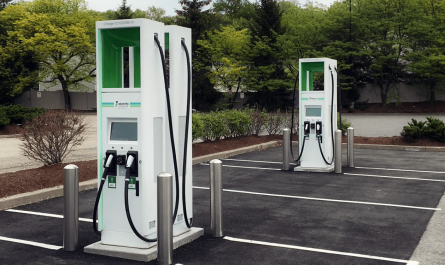Several major truck manufacturers have begun introducing electric models to trial with fleet customers.
Benefits
Lower operating costs – They have far lower fuel and maintenance costs compared to diesel trucks. With the higher fuel efficiency of electric motors and lower costs per kilowatt-hour of electricity versus diesel, operating an Electric Truck will save fleets money over the life of the vehicle. Some studies have shown operating costs could be up to 50% lower for electric vs. diesel trucks.
Reduced emissions – They produce zero direct tailpipe emissions, helping fleets meet increasingly strict emissions regulations. This allows them to access low or zero emissions zones in cities. By going electric, fleets can significantly lower their carbon footprint and reduce local air pollution from their operations.
Quieter operation – The electric motors in trucks are much quieter to operate compared to diesel engines. This makes them better for noise-sensitive locations like construction sites, warehouses, and urban delivery routes. Drivers will also experience less noise while operating electric trucks.
Lower maintenance requirements – Electric powertrains have far fewer moving parts than diesel engines, requiring less frequent maintenance. This saves fleets money on routine maintenance costs. Items like oil changes, emission system upkeep, and engine part replacements are eliminated withthem.
Improving Battery Technology and Range
As battery technology continues to progress rapidly, the capabilities of it are also improving at a quick pace. Early trucks often faced range limitations but battery development is extending vehicle ranges significantly.
Lithium-ion battery chemistry – Lithium-ion batteries have become the dominant chemistry used in electric vehicles. New lithium-ion formulations are delivering higher energy densities, improved life cycles, and faster charging capabilities compared to early designs. This allows for greater ranges in them.
Battery capacity increases – Battery pack sizes in them have continued growing larger over time. Early models often had under 100kWh of capacity but packs now regularly exceed 300kWh. The additional battery storage translates directly into extended driving ranges.
Thermal management – Advanced battery thermal management systems help regulate the temperature of lithium-ion cells for optimal performance. This allows batteries to operate efficiently over a wider range of driving conditions and ambient temperatures.
Charging technology – Both slower AC charging and faster DC charging options are improving. Combined with larger battery packs, trucks can now be rapidly recharged to high state of charge levels in under an hour versus overnight with early systems.
As a result of these developments, the driving range of electric trucks has grown significantly in a short period. Ranges now regularly exceed 150 miles on a single charge for medium-duty models, with some demonstrations of over 350 miles possible. This expands their usable range for most daily delivery and vocational truck operations.
Major Electric Truck Models and Manufacturers
Several major commercial truck manufacturers have launched electric models or initiated pilot programs in recent years. Here are some of the notable electric truck options now available:
Tesla Semi – Tesla’s highly anticipated Class 8 electric semi truck was unveiled in 2017 with a claimed range of 500 miles. Production has been delayed but remains a benchmark for long-haul trucking.
Freightliner eCascadia – Developed with support from Amazon, this Class 8 day cab model from Daimler Trucks has a reported range up to 250 miles. Production began in late 2022.
Peterbilt 220EV – Paccar’s battery-electric Class 8 model provides over 200 miles of range according to the manufacturer. It entered pilot testing in late 2021.
Ford F-650 – Ford’s medium-duty truck offering has been produced as an all-electric model since 2018. With a claimed range around 80 miles, it targets local delivery fleets.
Isuzu NQR-EV – Isuzu’s zero-emissions Class 6 box truck entered service with customers in 2021 after successful testing. It targets last-mile logistics operations.
Workhorse C-series – Workhorse produces a family of medium-duty Stepvans and box trucks with a 125+ mile range tailored for cargo/passenger transport.
Navistar eMV – International Trucks’ electric medium-duty truck recently launched featuring configurable battery and emergency backup generator options.
BYD 8TT – Chinese manufacturer BYD produces a range of electric heavy trucks available in overseas markets. Its 8TT Class 8 model has a claimed 200+ mile range.
A growing number of traditional and new truck makers are developing electric models to suit a wide variety of commercial vehicle applications. Demonstration fleets are expanding to gather real-world data as these trucks are evaluated for mainstream adoption potential.
While still in the early commercialization phase, industry experts widely believe they will eventually surpass diesel and gasoline trucks in adoption. Several trends indicate growing momentum:
Improving total cost of ownership – As upfront vehicle prices decline and operational savings accumulate over time, they are forecast to reach or surpass cost parity with combustion engines in the mid-2020s.
Increasing regulation – More governments are implementing vehicle emissions and noise standards that will accelerate the electrification of commercial fleets in many jurisdictions.
Expanding charging infrastructure – Charging networks for medium/heavy-duty vehicles are being established to support its deployment in key trade corridors and urban centers.
Corporate sustainability goals – Many logistics companies and retailers have committed to transition significant portions of their fleets to zero-emissions vehicles by 2030 timeframes.
Technological enhancements – Batteries, motors, and associated technologies will get better and cheaper to support wider adoption across all classes of commercial vehicles.
While challenges remain, experts forecast its sales will grow rapidly by the end of this decade. Some estimates predict over 25% of new Class 8 tractor sales could be electric by 2030 in favorable policy environments. As capability improves and total ownership costs decline further, fleets’ transition away from diesel is set to accelerate greatly. Electric trucks appear poised to ultimately dominate the commercial vehicle sector.
*Note:
1.Source: Coherent Market Insights, Public sources, Desk research
2.We have leveraged AI tools to mine information and compile it
About Author - Ravina Pandya
Ravina Pandya,a content writer, has a strong foothold in the market research industry. She specializes in writing well-researched articles from different industries, including food and beverages, information and technology, healthcare, chemicals and materials, etc. With an MBA in E-commerce, she has expertise in SEO-optimized content that resonates with industry professionals. LinkedIn Profile


 by
by 


